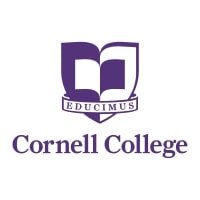Before the first computer was invented in 1968, there was much speculation to what it would actually do. Perhaps one of the most interesting is a proposition by Vannevar Bush in the article “As we may think,”. In this article, he suggests a machine that is eerily accurate in appearance to the common desktops that are used today. The machine would have a screen and a keyboard, and an input of photograph film. The film would contain articles, books and other written things within it, and the keyboard could be used to access said contents on the screen by typing in different codes. Film could be shared and copied, thus allowing many people to have easy access to the same information. Bush justifies this would be possible in the near future, as society was constantly advancing. Numerous developments in photography, television and telephones could all be used in said machine and keyboards were already being created. While some may argue this machine doesn’t necessarily hold all the minimum capabilities required of a computer, Bushes model certainly was unique. The ultimate purpose of the machine would be to allow people to have access to useful information, which if anything is similar to the concept of a database.
Database Management Systems are incredibly useful for modern day applications, as they provide an efficient, safe, reliable and convenient access to a massive amount of data for multiple users at once. DBMSs are very prevalent nowadays, thus it may be important to understand what they are and what advantages they provide. A database today must be able to handle terabytes of data a day and said data must be “persistent”, which means the data must not be deleted after use. Databases must also be able to withstand different errors and failures in hardware and software. Outside factors also must not affect said databases too much, such as power outages and malicious users. On top of this, multiple applications must be able to access the same data at the same time and it must be easy/convenient to use. The data must query-able for the most part and the database must be as efficient as possible. Finally, the database must be reliable, or no one will use it. Some databases may be programmed with frameworks. There must also be something called “middleware”, which allows applications to interact with databases.
A few key concepts of databases are as follows: the data model, schema vs data, data definition language and data manipulation or query language. Some people involved in the process of creating and maintaining a database are as follows: the DBMS implementer, the database designer, the database application developer and the database administrator.
An important concept of databases is the relationship model. The relationship model is a model for information in databases that can be queried and is the first form of databases explained. From what is explained, the relationship model is essentially a basic database. Schema is the structure of the relation, while the instance is the contents of the schema (like schema vs data). The NULL value is included in databases, in which it stands for unknown/undefined. NULL values can cause errors if one isn’t careful with how they handle their data. Another feature of the relationship model is a key, which is an attribute in which each value is unique, like an ID. Relationship models return a set of relations as a result of query.
In regards to the SQL tutorial on w3schools.com, it starts off very slow and simple. Before starting on the bulk of the language, it offers a list of commands and simple descriptions on what they do. The syntax page suggests SQL is a very readable language for people, as SQL is a declarative language. As for the actual exercises, they are simple and ramp up slowly in difficulty. The answer is easily accessible and the lesson that is being referenced by the exercises can be found by clicking a link off to the left.
